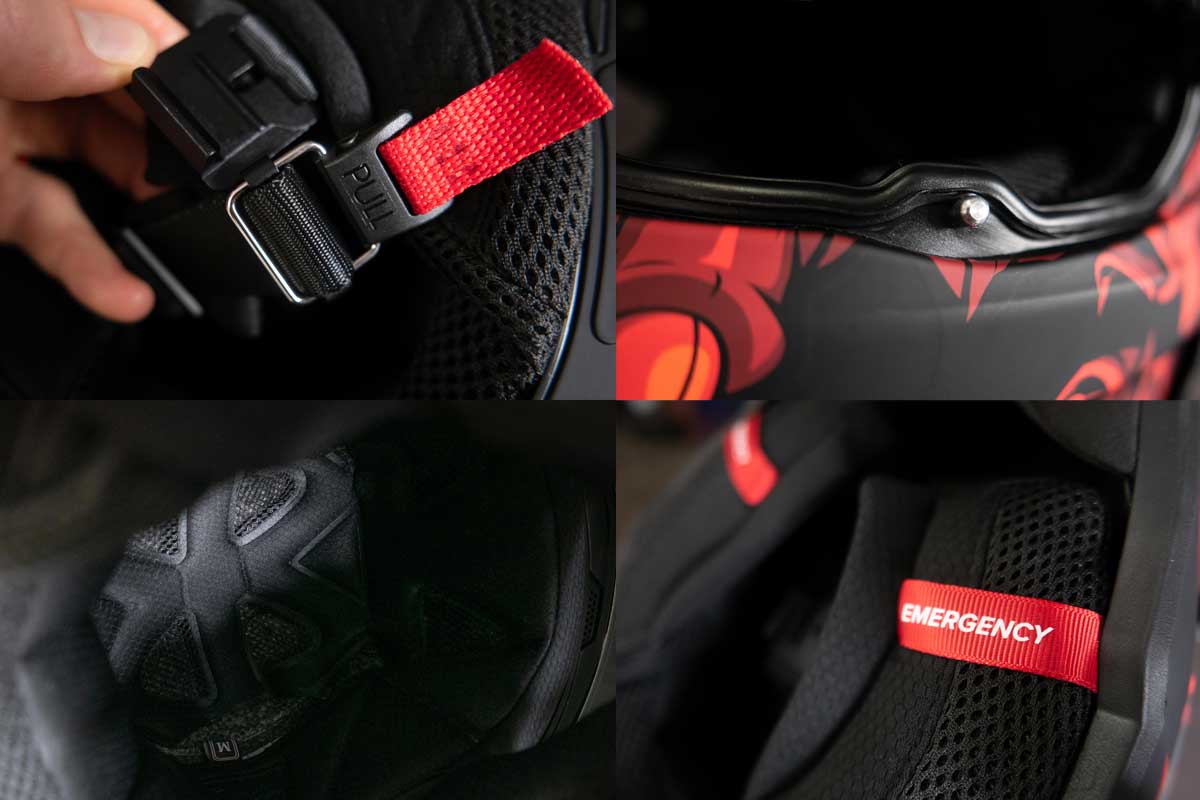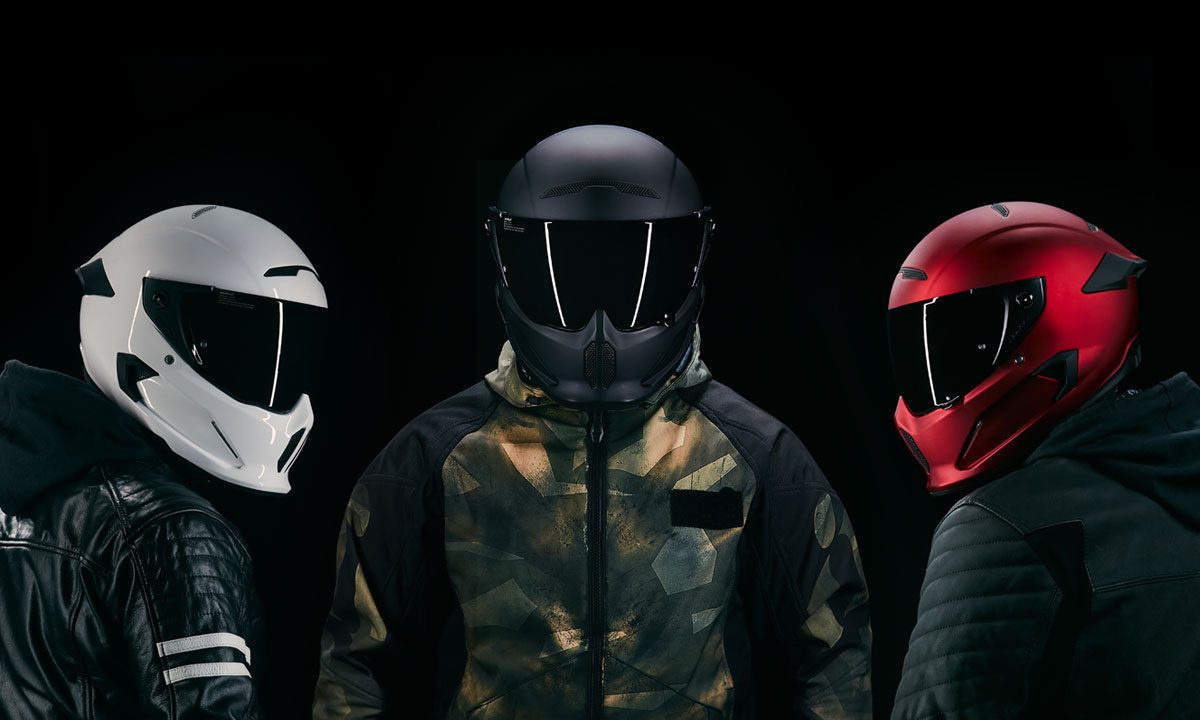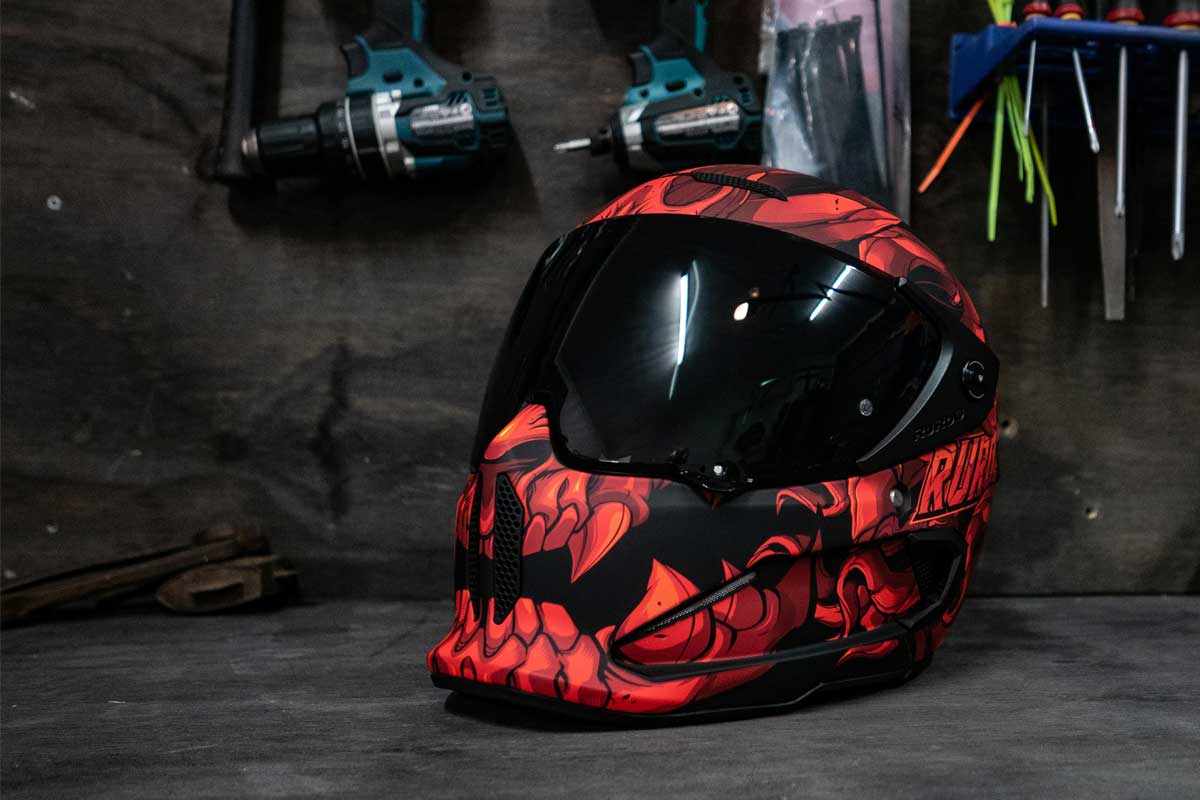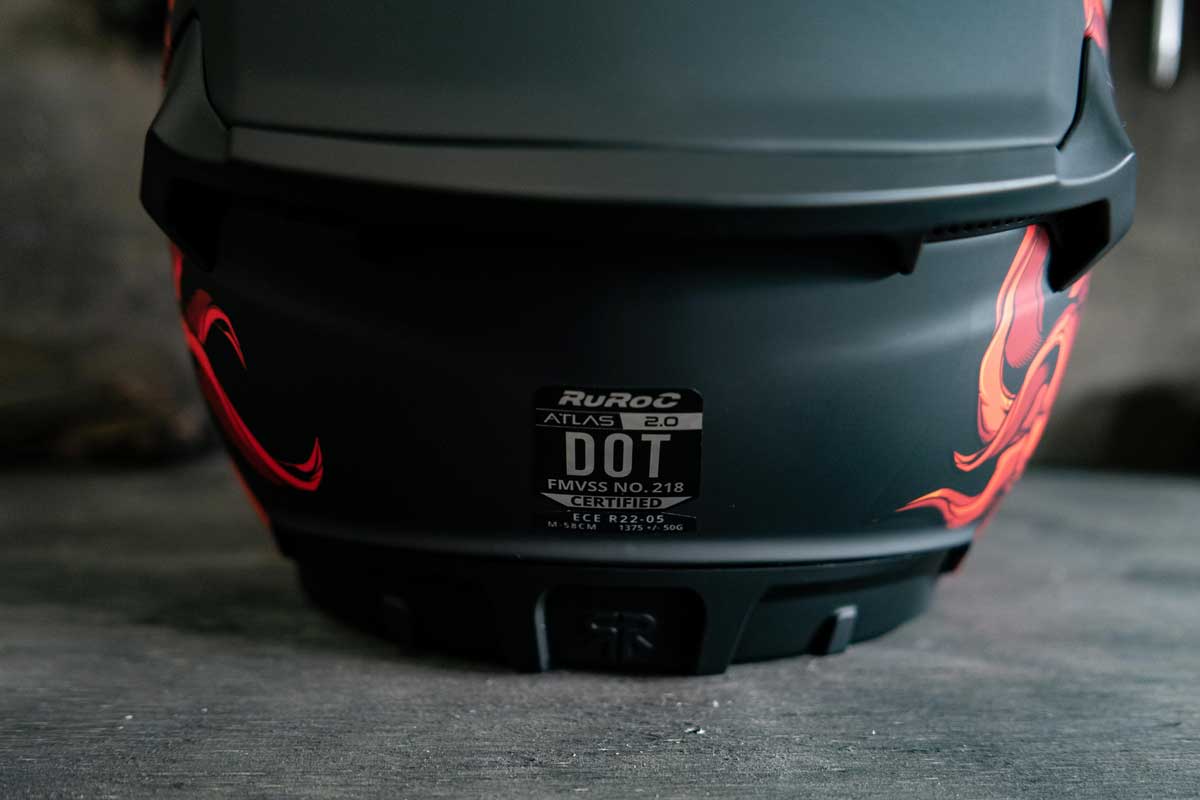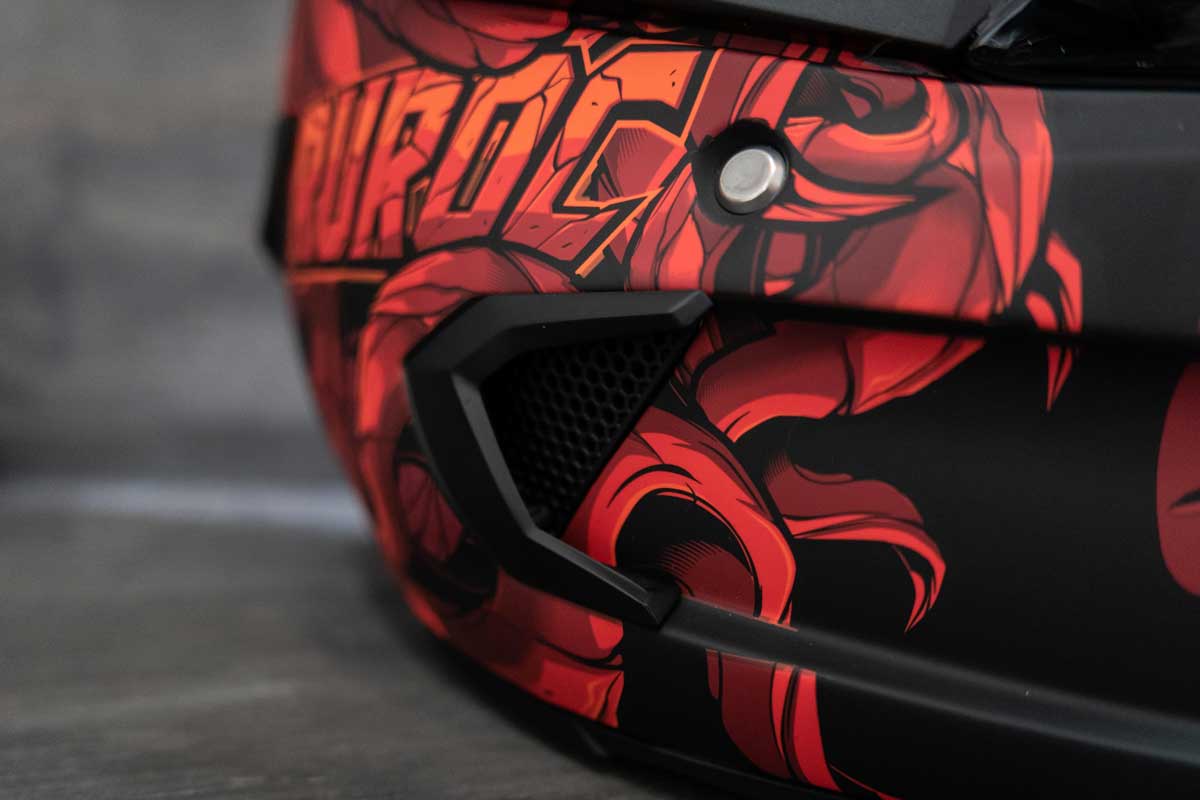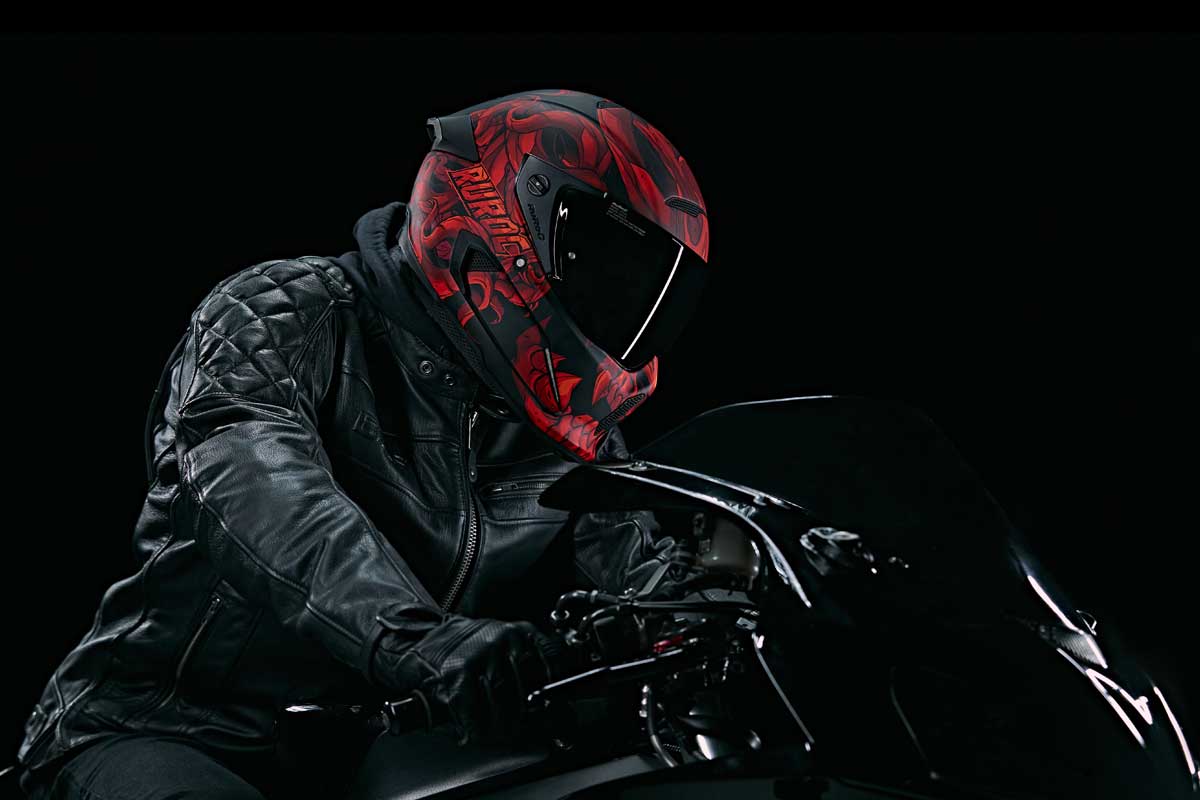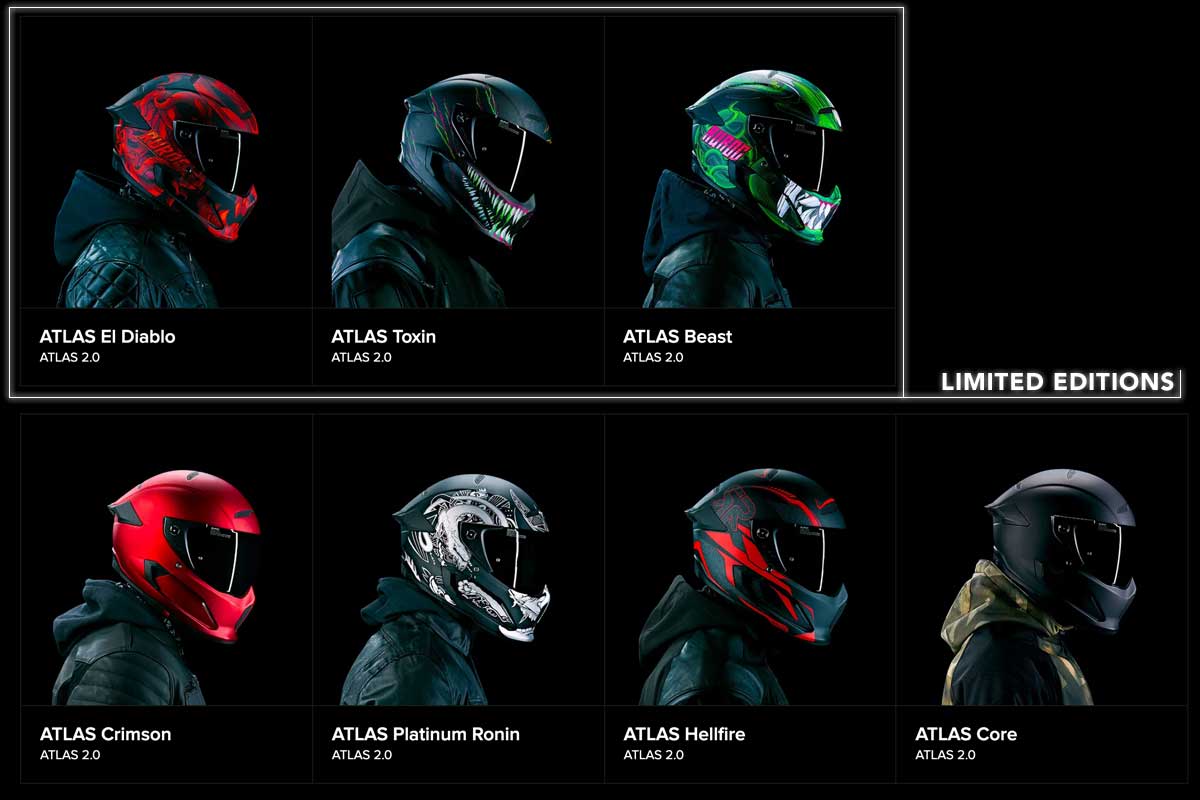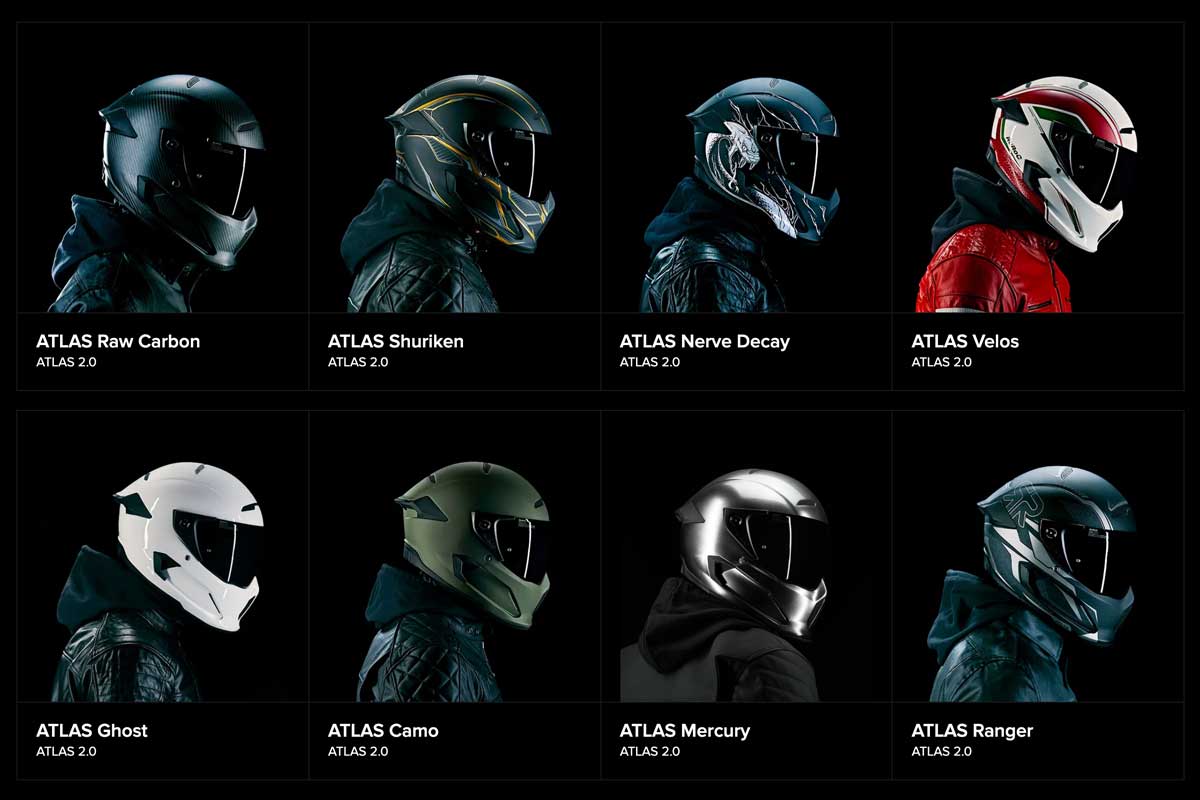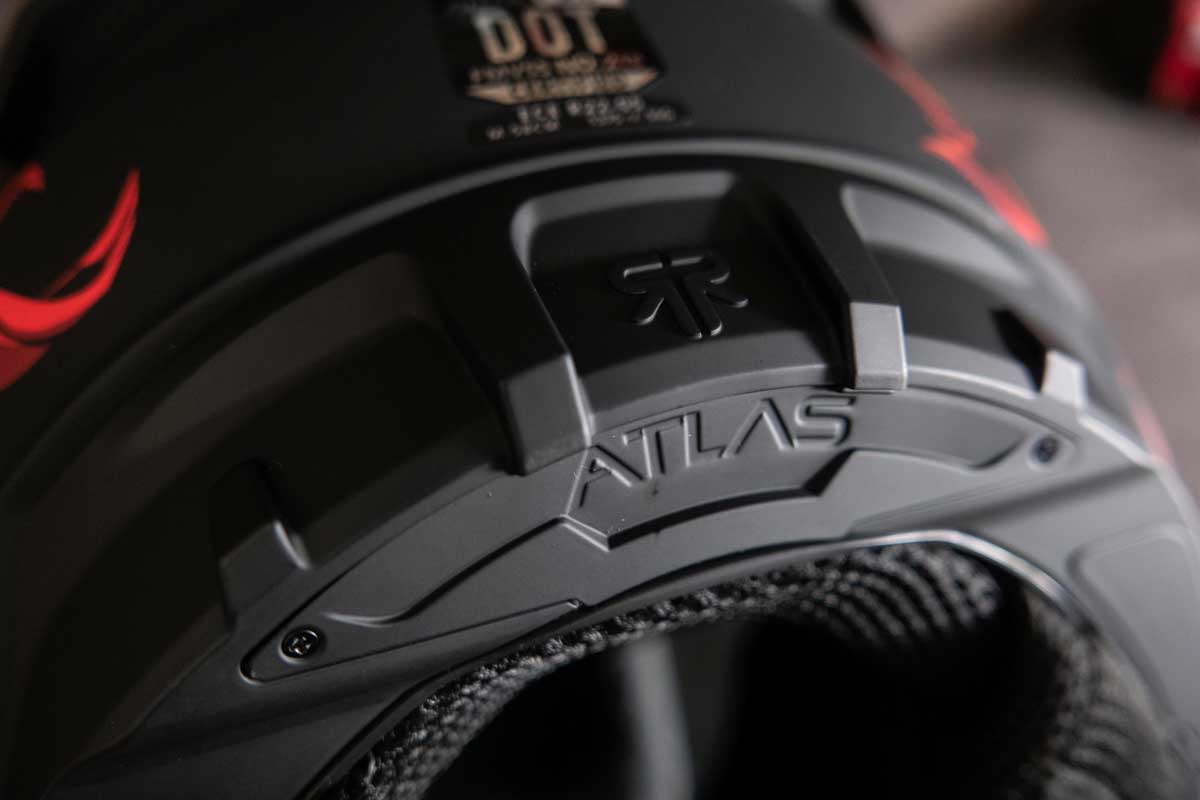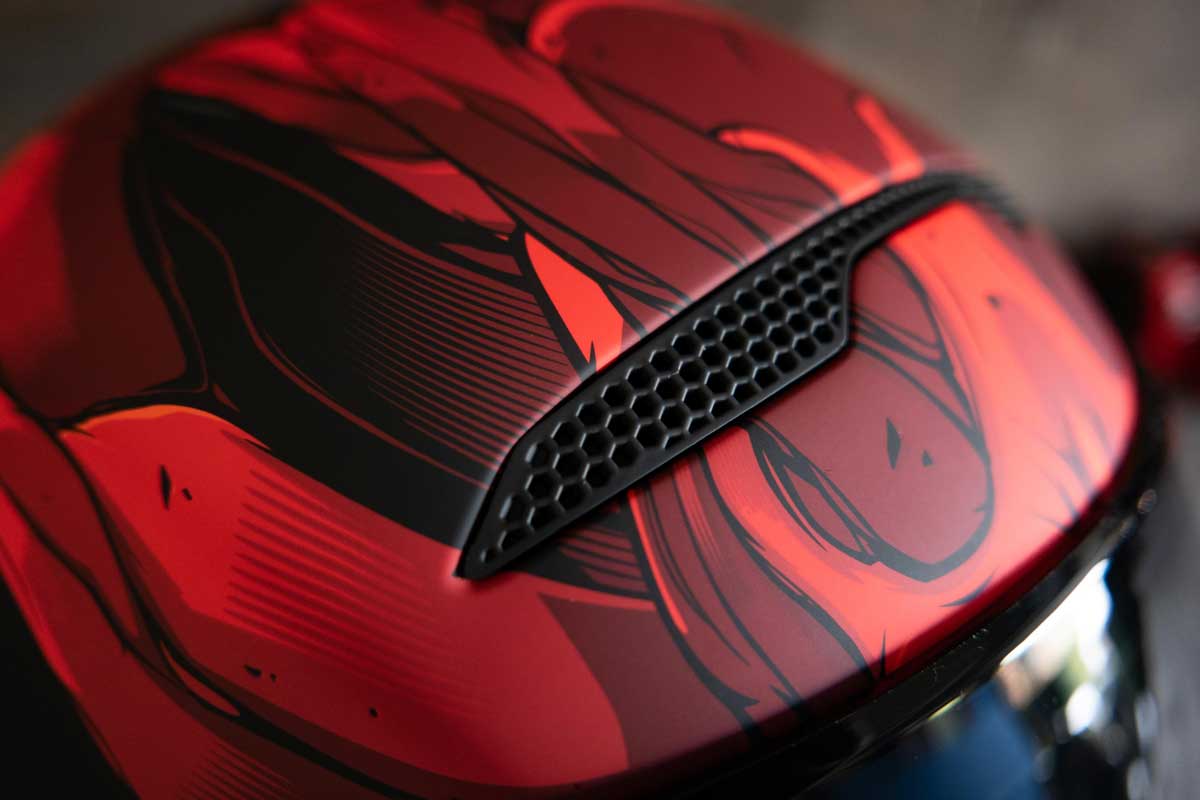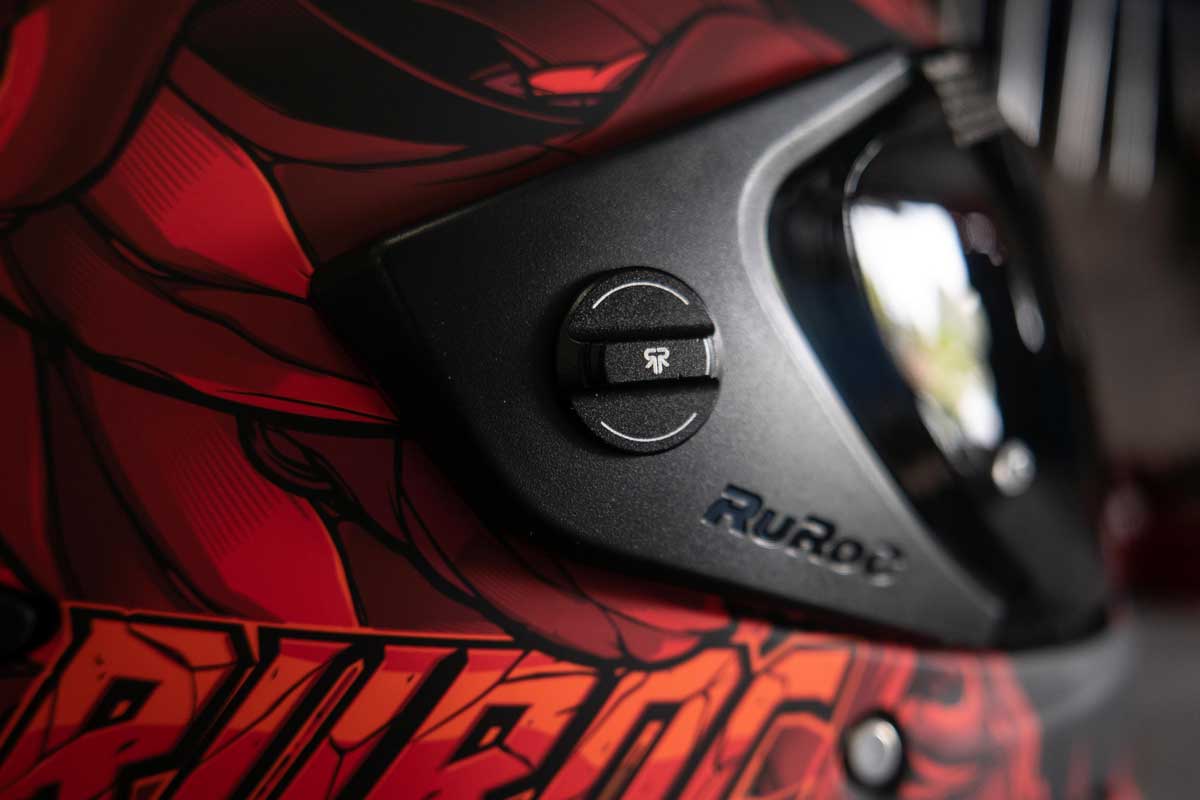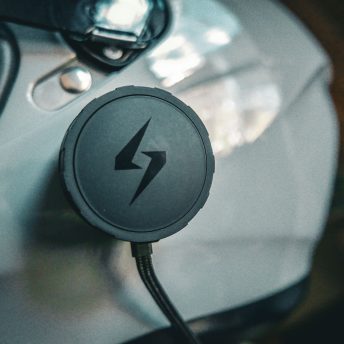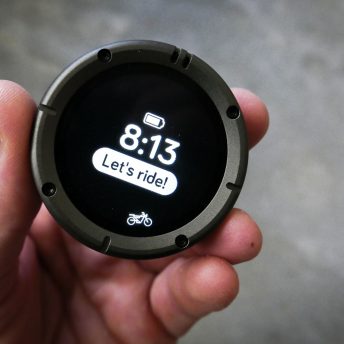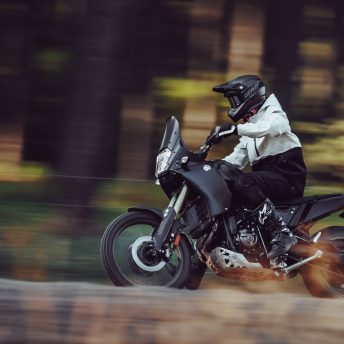Extreme sports headwear experts Ruroc entered the world of motorcycle riding gear back in 2017. Their ATLAS helmet boasted an impressive list of features and unique styling developed off their snowboarding helmet range. To kick off 2020, the British company has entered into the second phase of the ATLAS saga. The new Ruroc ATLAS 2.0 has just gone on sale but I managed to get my hands on one early. Here’s a look at some of the ATLAS 2.0 features, updates and my first impressions.
Ruroc Atlas 2.0 standard features
Along with its many new features, the Ruroc Atlas 2.0 benefits from features developed for the original ATLAS. These include both DOT and ECE safety certification, making it legal for use in most countries around the world. The helmets shell is constructed from T300 carbon fibre, a key factor in achieving a high safety standard and lightweight construction. The viewport is large and wide for maximum visibility and there are a variety of different shield finishes available. Ruroc has also utilised a Fidlock magnetic chin strap rather than a traditional D ring that promises fumble-free fitment.
ATLAS 2.0 upgrades & improvements
Ruroc has made a long list of changes to the ATLAS design when developing the 2.0. As any good company should, they paid close attention to what their customers and reviewers were saying. Some changes are minor updates while others are significant improvements.
Wind noise was one of the more common complaints I found online regarding the first Atlas. That’s not surprising as it can be one of the most unpleasant aspects of riding a motorcycle. To minimise the amount of noise inside the ATLAS 2.0 Ruroc revisited several aspects of the helmet’s design. This was done by making improvements in 3 key areas. Firstly they added a wind stop to the padding at the main opening of the helmet. Second, Ruroc decided it was best to close the vents closest to the ears. And third, the rubber seal around the visor was improved.
To prevent any visor lift Ruroc has also revised the helmets locking mechanism. The visor snaps down on to a pin over the left cheek and it can be effortlessly opened again with an easy access thumb tab. Along with minimising wind noise, a new visor seal also offers a watertight barrier and Ruroc states that the visor has an antifog coating. Improvements to the inside of the helmet include a new comfort liner and chin pads. Additional safety benefits come from the addition of emergency release cheek pads should anyone need to remove your helmet in an accident. The chin guard has also seen a redesign for safety improvements and Ruroc claims inserting and removing your head from the helmet can be done more easily now thanks to a redesign of the EPS core.
Another of Rurocs outtakes from customer feedback was the complexity of swapping the visors. Previously they supplied a special keyring tool for the job, this has now been replaced by a tool-less system that requires little more than the twist of a finger to complete.
ATLAS 2.0 colours & limited edition styles
For my testing purposes, Ruroc supplied me with a limited edition ATLAS 2.0 El Diablo. This helmet features a wild skull and flame graphic in vibrant red tones on a Rubatone black basecoat. If you’re after something a little less conspicuous the new range includes plenty of alternatives. In total there are 3 limited edition designs (get in quick!) and 12 standard patterns and colours. My pick of the bunch would be the metallic finish Crimson and Mercury, the classic Ghost white or the slick Raw carbon. Ruroc will also be selling 7 additional visor styles for the ATLAS 2.0 and 2 Pinlock inserts including a sun-reactive photochromic option.
Shockwave Bluetooth system
One of the great features of the ATLAS range is the ability to install Ruroc’s own Bluetooth comms system called Shockwave. Designed to be completely hands-free the Shockwave unit installs neatly into a cavity in the back of the helmet. You simply remove the existing cover, slide in the Shockwave unit and fit the speakers. This means there are no external add-ons that can prevent additional injury risks to a rider in the event of an accident. The Shockwave unit is lightweight, water-resistant and will allow you to communicate with other riders, listen to music and receive or make phone calls while on the go. I’m yet to test the unit myself, but it looks like a must-have accessory for this helmet.
ATLAS 2.0 first impressions
Perhaps the biggest attraction to the Ruroc ATLAS 2.0 for some will be its unique styling. Aggressive and angular the only comparison I could make would be with Simpson helmets. That said the ATLAS 2.0 is a unique design that lends its looks to Rurocs other products more than following in anyone else’s footsteps. This earns them a few extra marks from me since being original in this market seems to be difficult for most.
After my first few rides in the helmet, the liner has proved to be comfortable with plenty of room for my big ears and the addition of speakers. It may not be as plush or as thick as other helmets I own that sit at a similar price point, but that didn’t make the ATLAS 2.0 any less comfortable. One thing I did notice though is how light the helmet feels when it’s on. Tipping the scales at 1538g (or 1618g with the Shockwave installed) it sits at the lower end of the scale when compared to similarly priced helmets from Shoei, Bell and Simpson. However, I think the lightness I felt was probably due to aerodynamics of the helmet meaning all those ridges and angles actually do more than simply look cool.
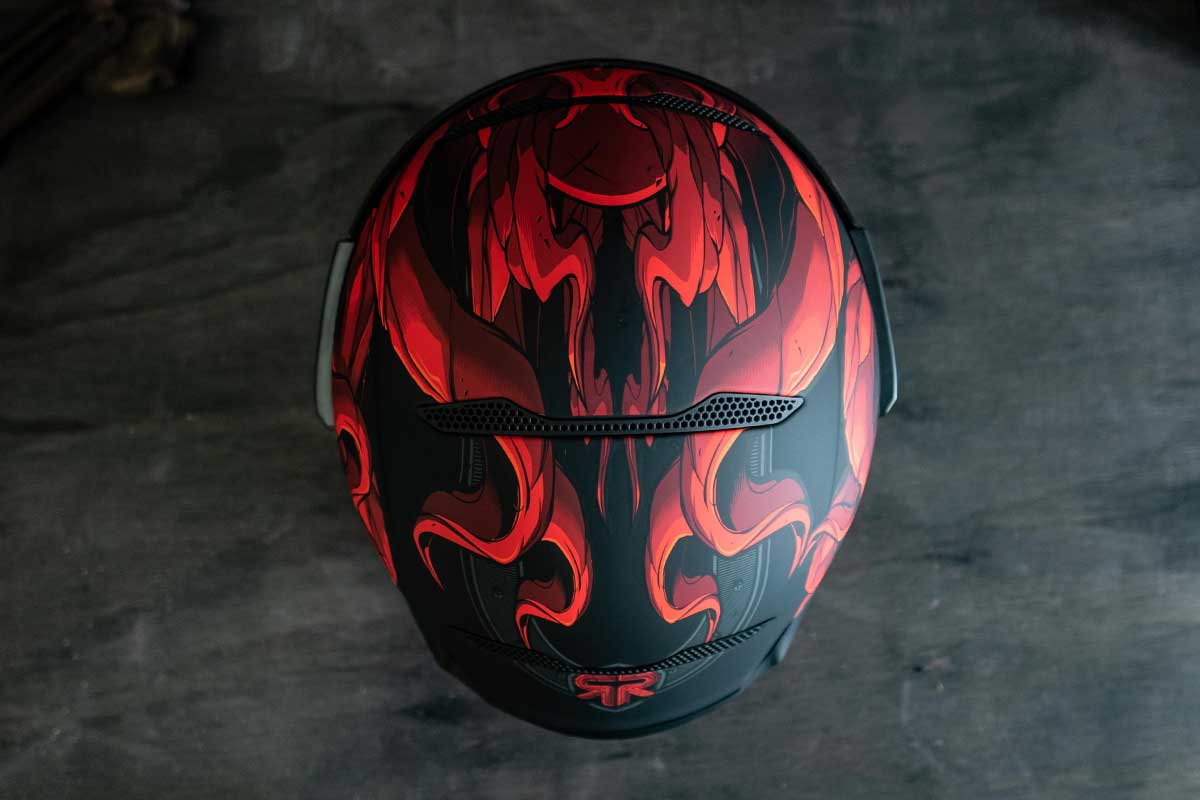

As for improvements in internal noise levels I have not tested the previous model to make any comparisons. At urban speeds, The ATLAS 2.0 is a quiet helmet compared to many of the retro-styled lids I’ve tested. Things get louder at higher speeds, but this is to be expected. If you have any common sense you should be wearing plugs for any extended time on the highway anyway.
Ventilation is also very good despite Ruroc closing off the 2 vents beside the ears. Unfortunately, there doesn’t seem to be any way of closing the vents along the top of the helmet. An additional benefit of the wind stop around the neck is the extra protection from the cold but the inability to close those top vents may make the ATLAS 2.0 better suited to warmer climates. Right now it’s stinking hot in Australia so I’m yet to put this to the test.
The design of the shield and the viewport does indeed offer a great field of view. The visor also doesn’t have any obvious distortion areas to distract you. Unfortunately, the Rubatone style finish on my test helmet picks up greasy fingerprints and dust quickly, but a quick wipe with a wet cloth helped put my OCD at ease.
My favourite features of the Ruroc Atlas 2.0 would have to be how the Shockwave Bluetooth system is integrated into the design and the Fidlock strap. Messing about with helmet straps can get very tedious when you’re on and off the bike a lot. Once you get the knack of the way the Fidlock works it’s literally the best thing in riding gear since the development of the helmet. Thanks to the magnet in the Fidlock the 2 clasps snap together when you get them close. Then to undo it you simply pull down and it’s undone again.
Priced between $420 – $495 USD the Ruroc Atlas 2.0 is available now on their website.
